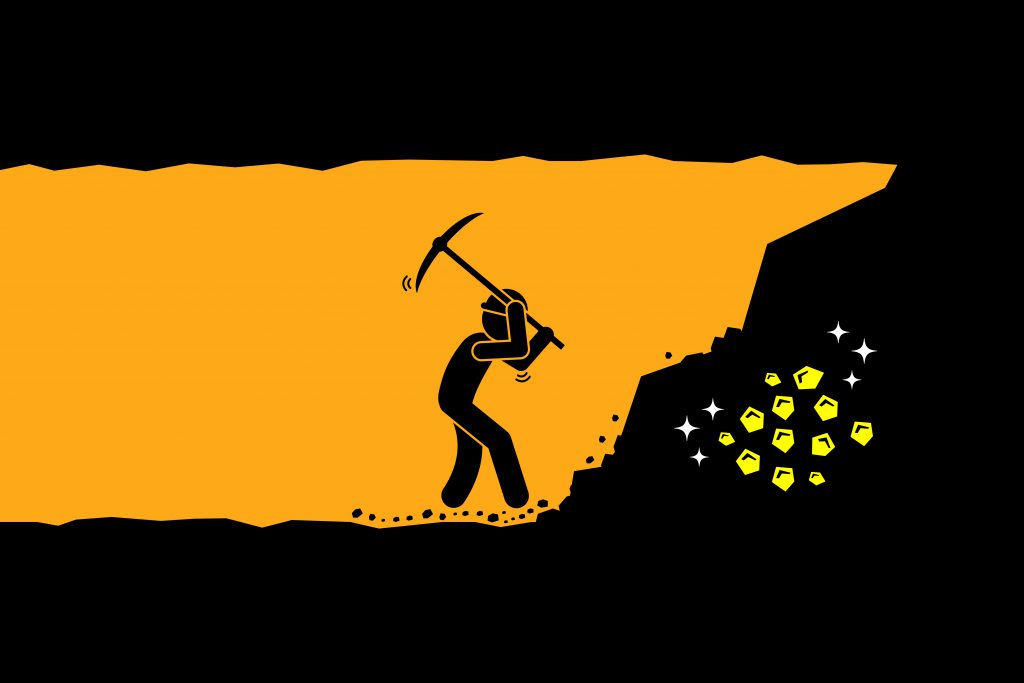In many ways, doing experimental research is like digging for gold. Before you have done your experiment or before you start digging, it is uncertain whether or not you will find something worth your while. The ultimate goal of science is to find all the chunks of gold hidden in the earth; to find out all there is to know about our universe. There are several distinct strategies scientists employ to search for gold. I will go over them all and compare them based on the speed with which they yield gold.
The lucky strikers
The first strategy is to choose where to dig purely based on chance. We shall call this the strategy of the lucky strikers, because choosing a dig site randomly requires considerable luck to find something. A scientific lucky striker essentially performs a random experiment and hopes to find out something new and useful. Sometimes such chance findings can occur in science: Alexander Fleming famously discovered penicillin after returning from his holiday when he noticed that the mold (=penicillin) that had grown in the accidentally contaminated petri dish was very good at killing bacteria. However, such lucky discoveries are rare and it helps to already have some idea of where to look for gold. Trying to dig somewhere based on chance might work fine if there is only a small number of possible sites where one can look for gold. However, the number of possible experiments that can be conducted is so large that this strategy will take far too long to be useful. Trying to do science by doing random experiments is therefore not really a good use of one’s time.
The exhaustive excavators
The second strategy is a bit more reasonable: it is to stay close to where gold has been found before, either by digging the tunnel slightly deeper or by digging a new one close by. Let’s call this the strategy of the exhaustive excavators, because anyone following this strategy tries to exhaustively mine out the area close to an old mine. Once an experiment has revealed something interesting, these exhaustive excavators stay near to that discovery and try to vary the experiment slightly to discover new, but related facts. This is a sure way to dig up some new chunks of gold, as gold often clusters nearby. The strategy of the exhaustive excavators is very useful too because it both confirms and nuanciates the truth of the original finding. Moreover, their strategy is the primary method with which technological companies and producers of medicine or other goods are slowly but surely improving their products. Unfortunately, in science, like in life, gold mines do run dry. When that happens, the added value of the new insights and applications generated by further research gets smaller and smaller. What’s worse, trying to find a new mine by exhaustively searching around an existing tunnel or line of experiments is more work than worth the effort, for the same reason we saw before: there is more rock than gold in the earth. So when the mine’s yield gets small and it becomes time to move on to a new field of study and a new way of thinking, a different strategy is required than that of the exhaustive excavator.
So far, the most successful strategy that scientists have used to find new gold mines is the strategy of the theorist. By thinking a bit harder about where to look, theorists can spend a lot less time digging than either the lucky striker or the exhaustive excavator, and find more gold to boot! Why is that? And what is theorizing really? We shall see next time in the second part of this series.
Writer: Rowan Sommers
Editor: Francie Manhardt
Dutch translation: Cielke Hendriks
German translation: Natascha Roos
Final editing: Merel Wolf

